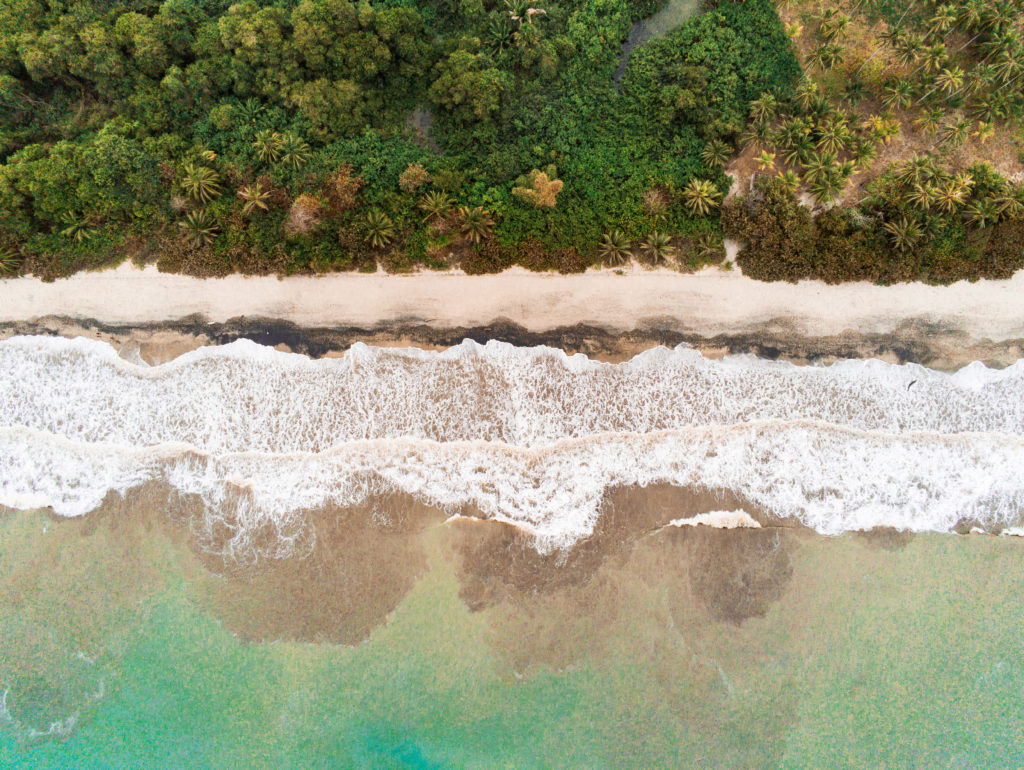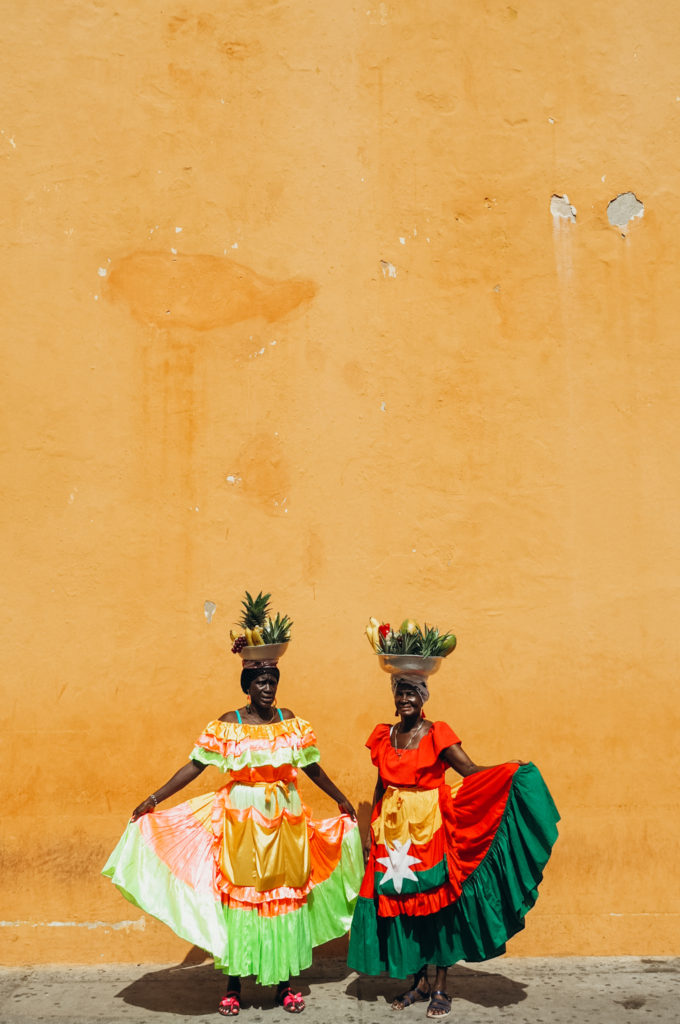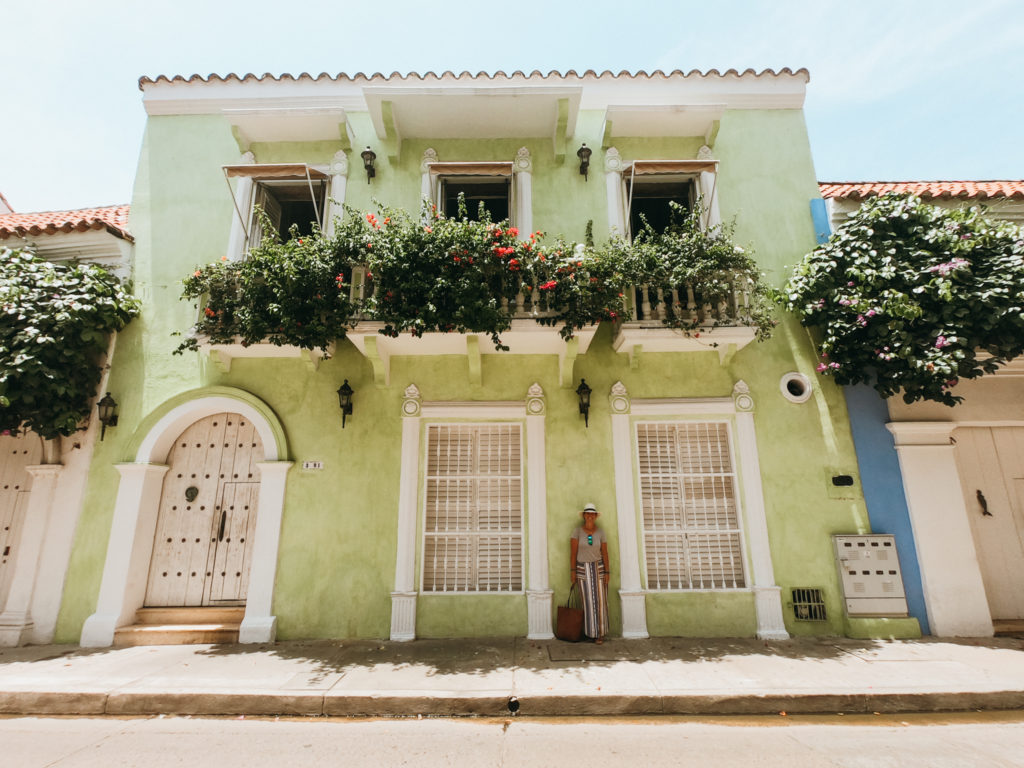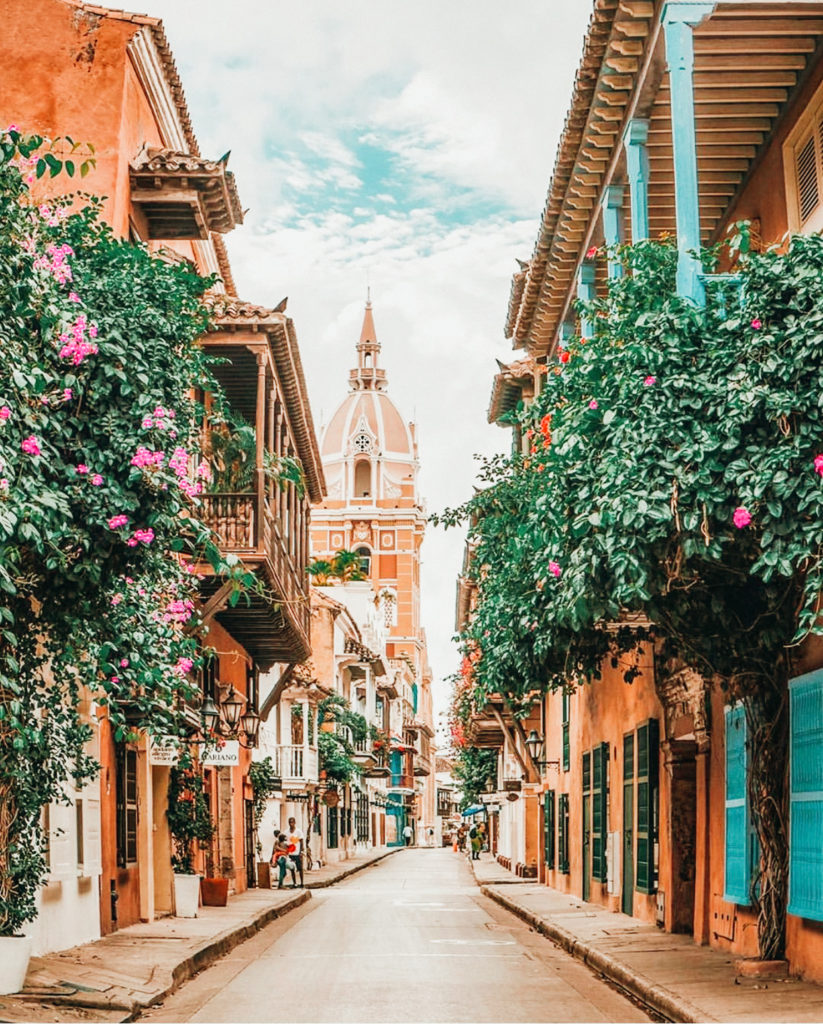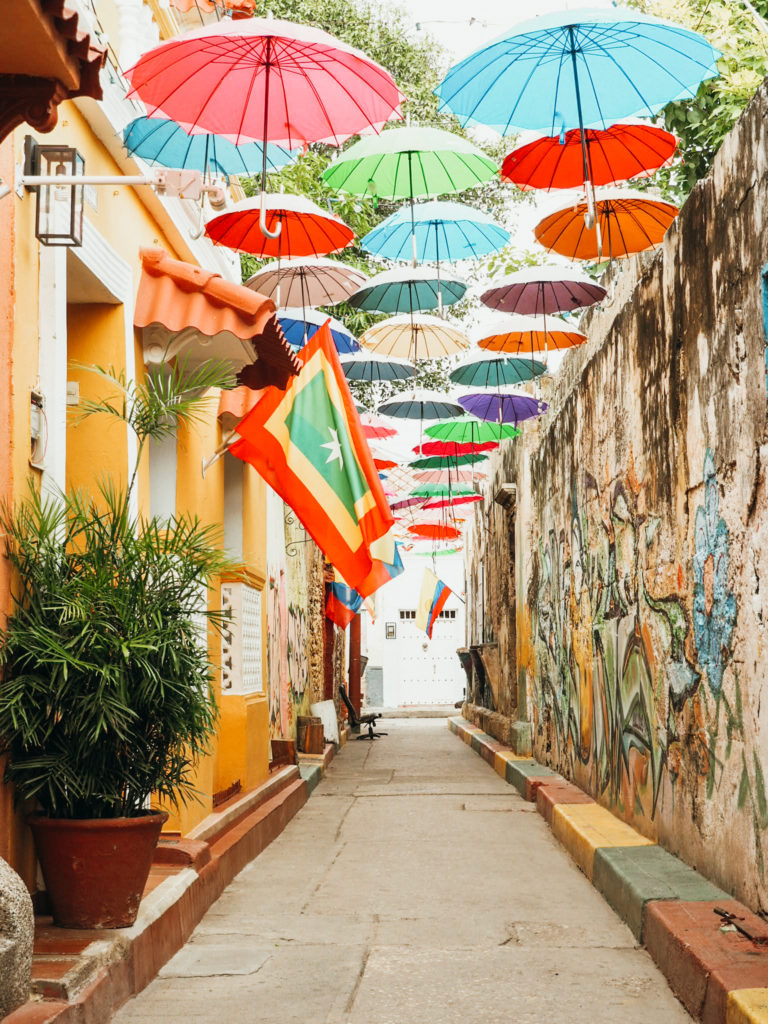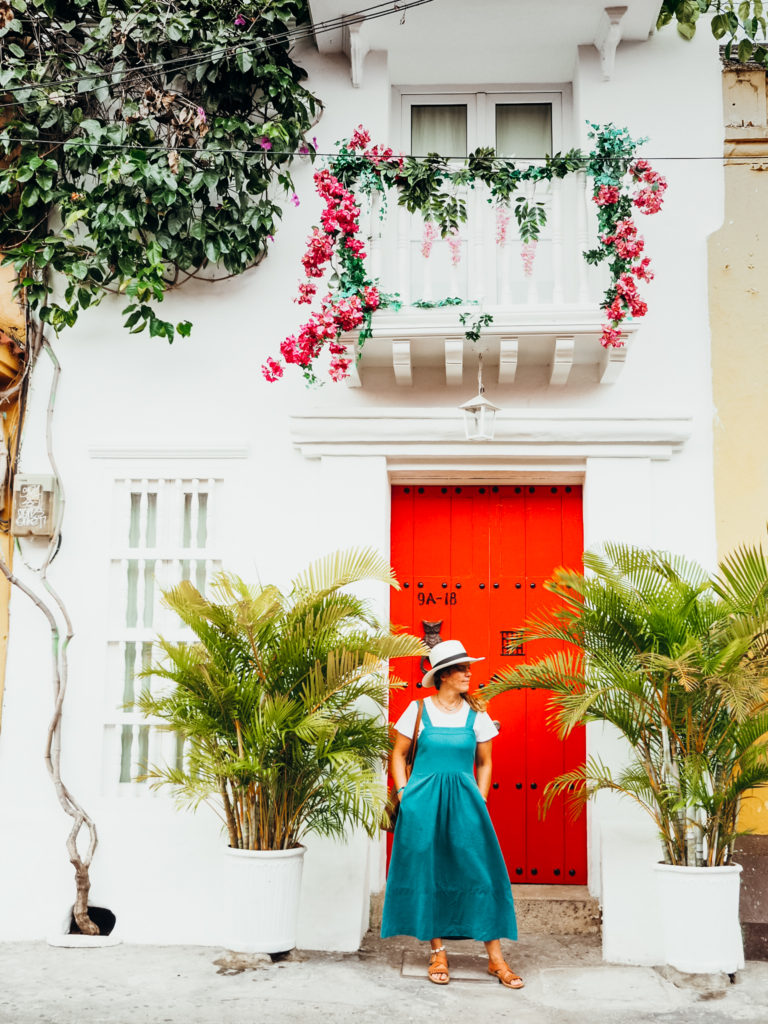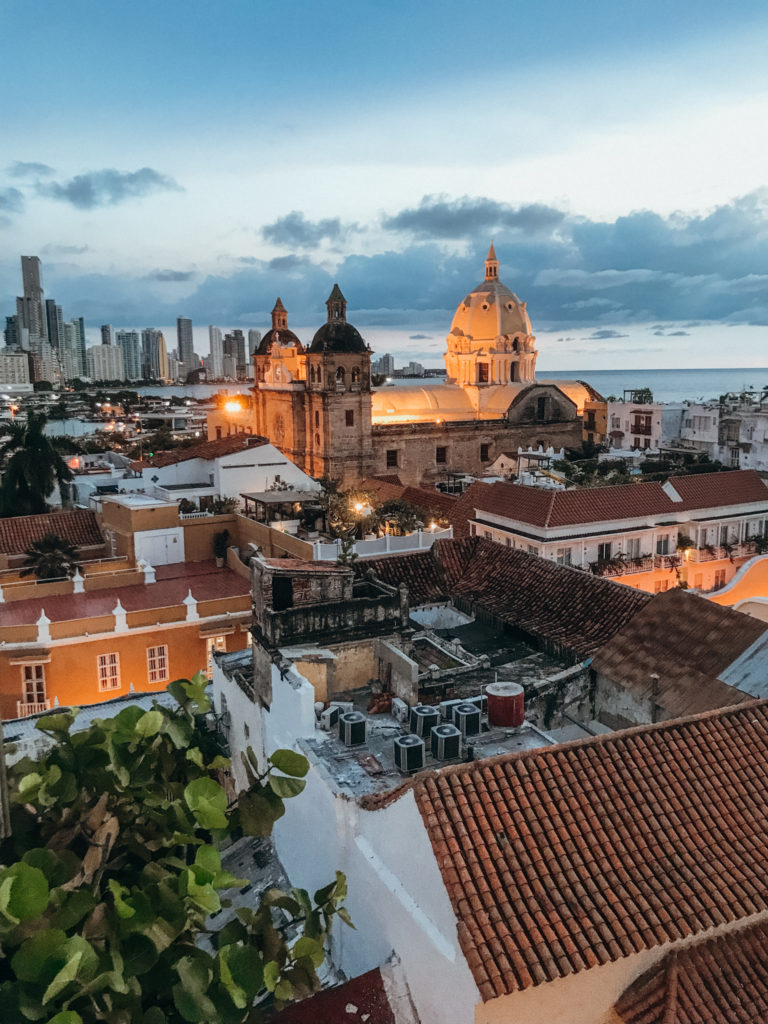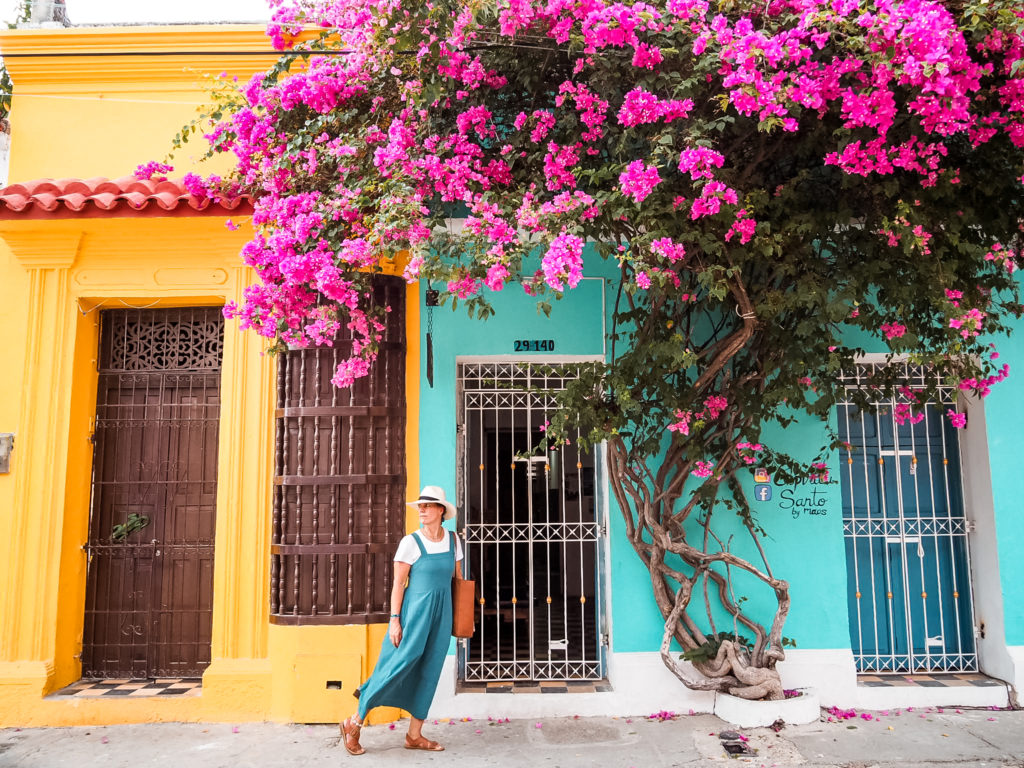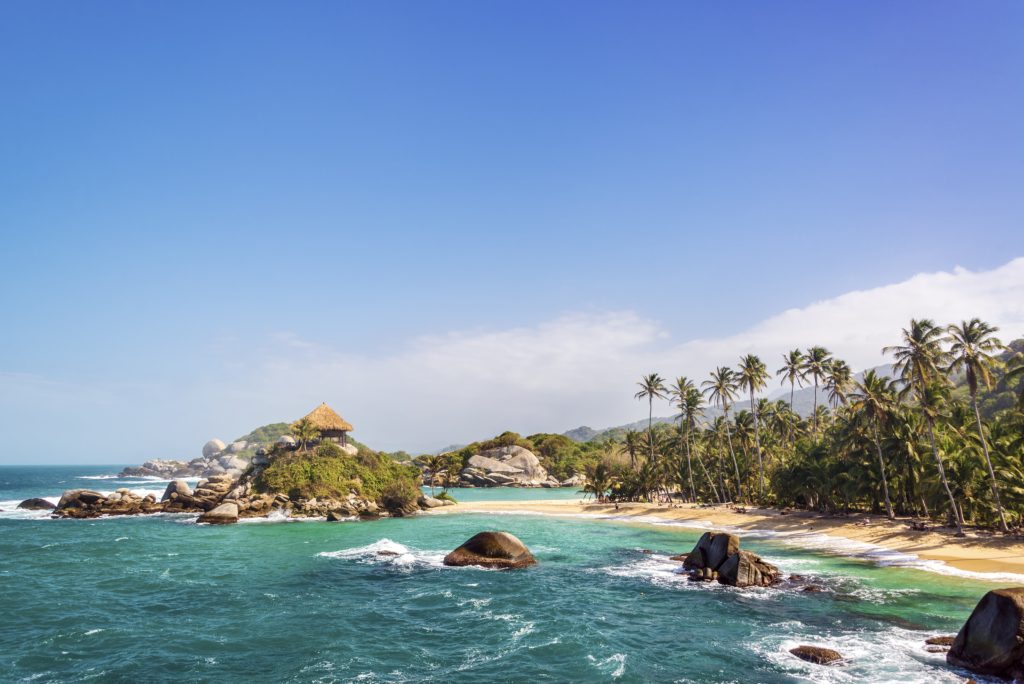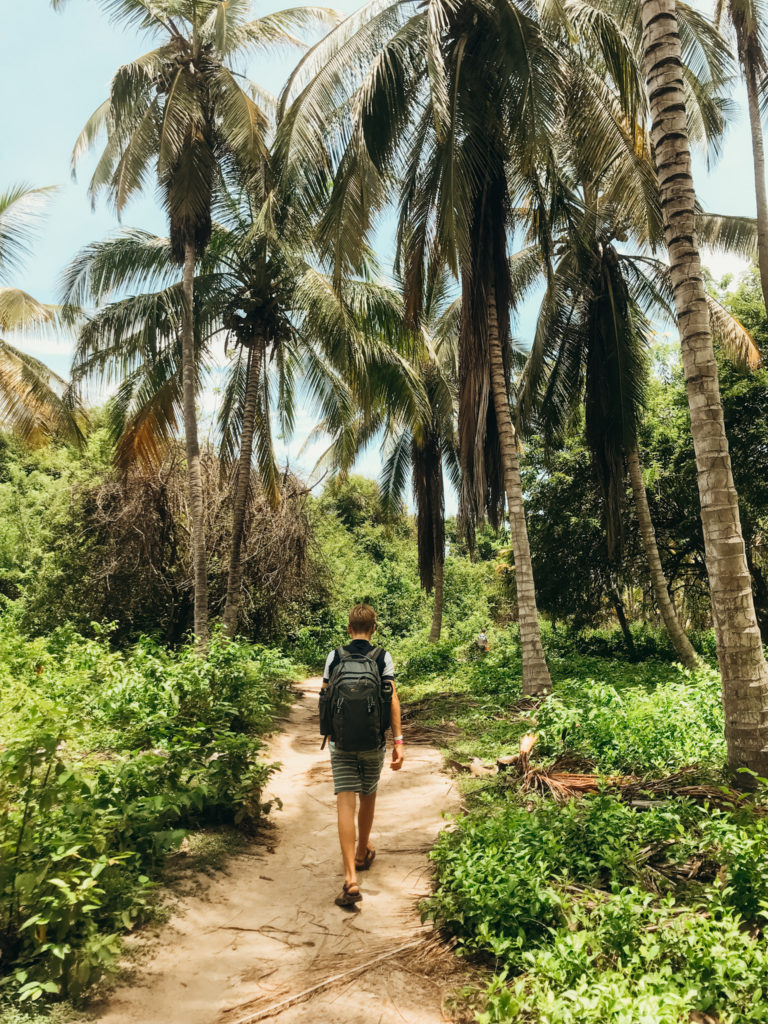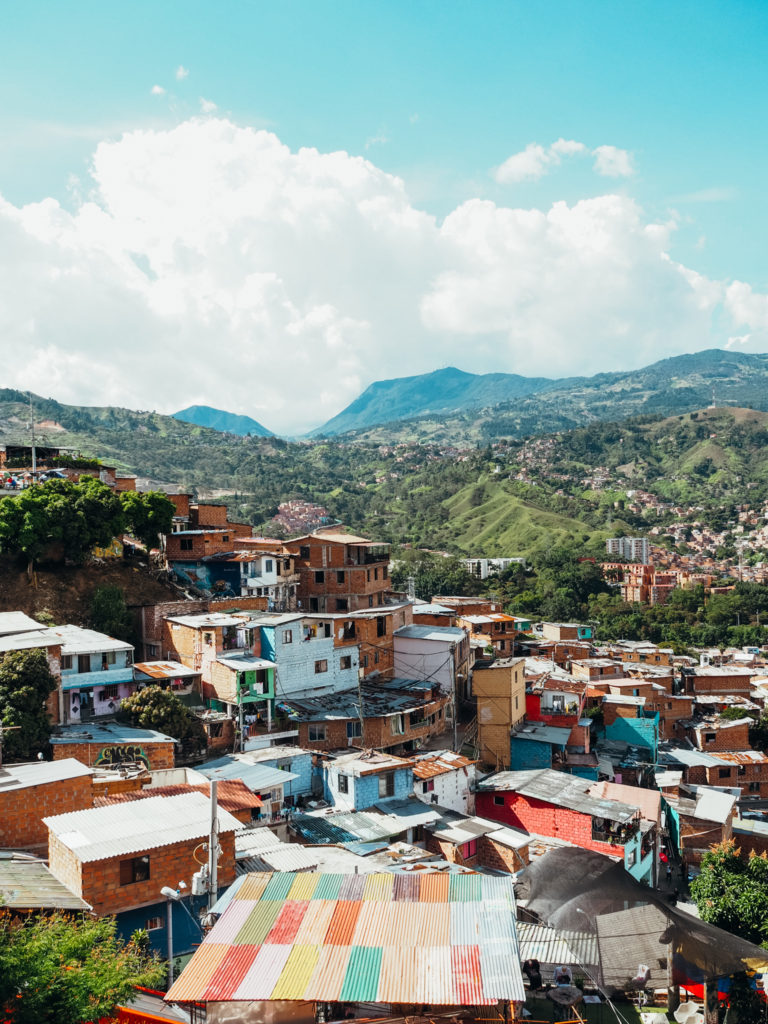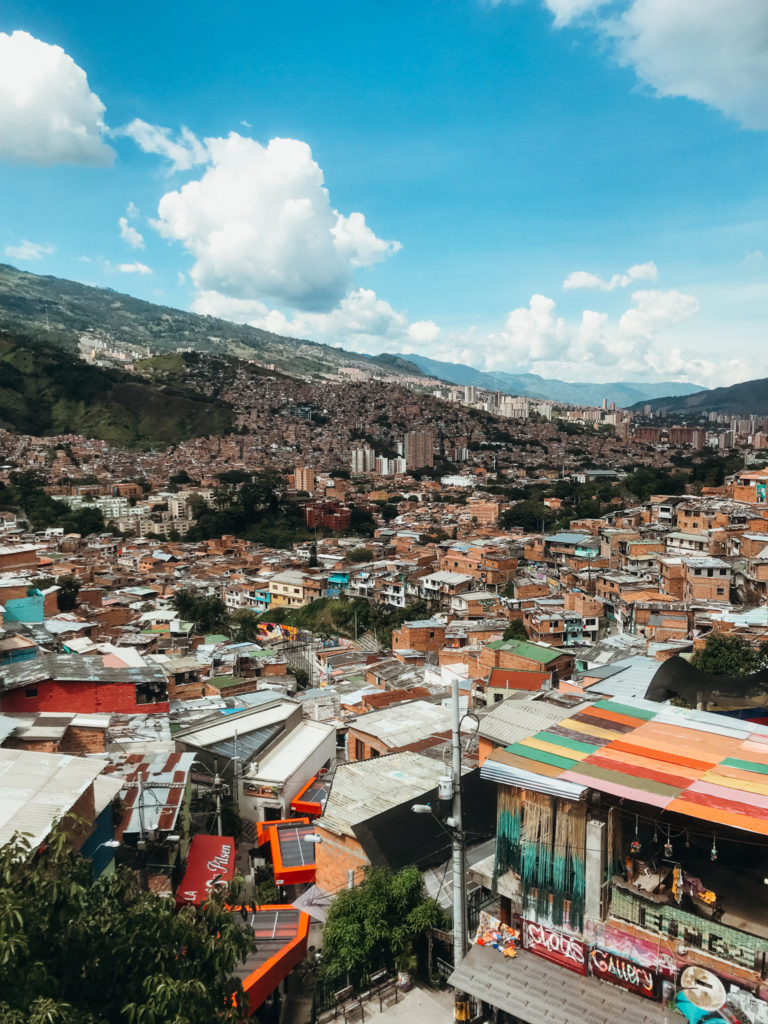Colombia is a hidden gem. It still remains relatively less traveled to because let’s face it, it doesn’t have the best reputation with its long history of political warfare, drug and gang violence. However in the last decade or so, Colombia has experienced a major turn-around as the government has stepped up its efforts in cracking down on the drug cartels, thus decreasing much of the violence and issues plaguing this South American country. Since then, tourism has been on the rise as more and more people are visiting. We spent a month exploring this beautiful country searching for the best outdoor adventures and were NOT disappointed. Hence why we created the ultimate family adventure itinerary in Colombia.

One of the things we got asked a lot while in Colombia was, “Is it safe with kids? (We also got this question in El Salvador.) The short answer: YES. If you know what areas to avoid and just use common sense, you’ll be perfectly FINE. Every country has its problem areas and Colombia is no exception. But as explained above, Colombia has made some drastic improvements in the most recent several years, making it substantially safer for tourists (and even the citizens!).
One thing we found to be true about Colombia is the people are exceptionally friendly, helpful and eager to greet you in their country. Everywhere we went, we always felt welcome and safe. In fact, I would dare say that Colombians might be some of the warmest people we’ve met anywhere. Their culture is incredibly vibrant and lively too–they love their music, dancing, food, coffee and any excuse to get together and have a good time. It truly is a wonderful and diverse country.
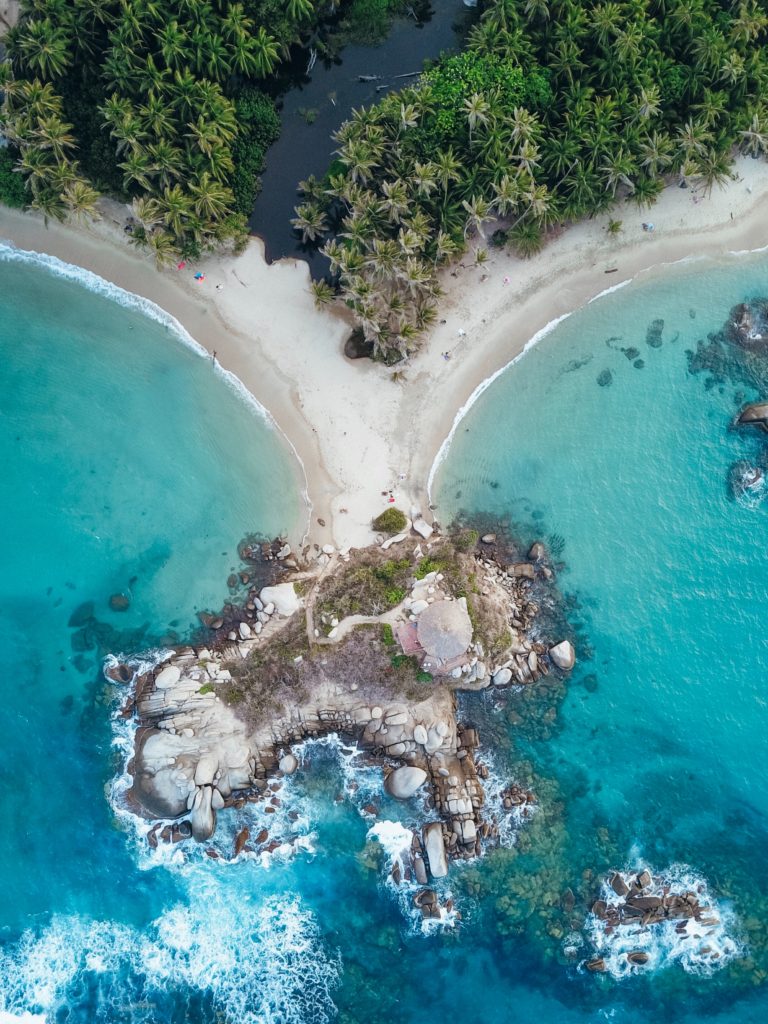
Most of the world doesn’t know that Colombia has the second highest biodiversity on the PLANET (only behind the much larger Brazil). Yep, you heard that right. From the Colombian Amazon to the Andes mountain, to the coffee plantations (it is the world’s third largest exporter of coffee), to the coastal regions on both the Pacific and Caribbean seas–Colombia truly has it all. Just to give you an idea: 1 out of every 10 species of flora and fauna in the world can be found in Colombia. Home to nearly 60,000 species of wildlife and 9,000 endemic species (unique to only Colombia), this country is classified as one Earth’s 17 mega-diverse countries.
Speaking of wildlife, there are more species of birds and orchids in Colombia than anywhere else on earth! Colombia is second in the number of species of plants, a amphibians, butterflies and freshwater fish; third in the number of species of palm trees and reptiles and fourth in its diversity of mammals. So, if wildlife (especially birds!) is your thing, Colombia is your destination.
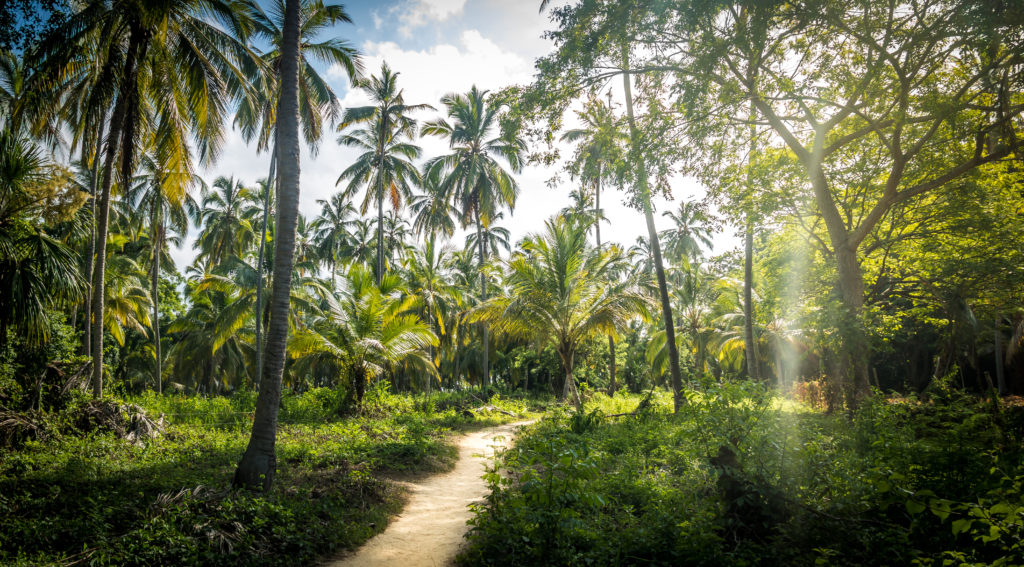
Our ultimate family adventure itinerary in Colombia is about 14-15 days in length with options to shorten or lengthen based on your travel preferences. Since Colombia is a big country though, the more time you have, the better! We’ve narrowed it down to some of the best outdoor adventures and activities that will span mountains, jungle, valleys, beaches, and even cities.
If you’re wondering when the best time to visit Colombia is, well if you want to go during the driest season (least amount of rain), then your best bet is between December and March. But be warned, this is also peak season when prices are highest. As far as temperatures go, if you’re in the coastal regions, it’s hot and humid all year so that be prepared to sweat. We went in September and experienced a little rain, but not enough to really affect our plans negatively.

Day 1-3: Cartagena and the Rosario Islands
Your ultimate family adventure itinerary in Colombia will start in Cartagena de Indias. *Note: Technically you could do this itinerary in reverse and start in Medellin if flights are cheaper to/from Medellin opposed to Cartagena. We loved Cartagena so much (other than the heat!), that 2 of the 3 full days should be spent exploring this beautiful, colorful city. The main areas of Cartagena to visit are the famous “Walled City” or Old City (once built as a fortress to protect this port city from pirates and Spaniards) and the nearby, hip neighborhood of Getsemani.
Cartagena is a very walkable city, so need to rent a car here. We stayed in Getsamani at Casa Pizarro Hotel Boutique and loved it. Great location with lots of restaurants and shopping close by. You can also find some other hotel options on Booking.com. We usually stay in Airbnb’s, but if we are only in a place for a few days, we just book a hotel.
Explore Cartagena
The main attractions in Cartagena are the colorful, wall murals of Getsemani, the bright-colored umbrellas and banners that line the narrow streets, the shops and restaurants of Old City, and a tour of the castle, Castillo de San Felipe de Barajas. Don’t forget the churches too and if you’re going to see just one, make sure to stop at Iglesia San Pedro de Claver. Our favorite thing to do Cartagena was eating our way through the city–from ceviche, to pasta, to mojitos and coco limonadas (the best we had was the rooftop bar at Hotel Movich!). For the best restaurant suggestions in Cartagena, check out The Culture Trip.

Snorkel and relax on the Rosario Islands
In our opinion, the beaches in Cartagena aren’t so great, so if you want to spend a day at a gorgeous beach and/or see marine life, make sure to take a boat trip out to the Rosario Islands for a day of beach time and snorkeling. These islands are composed of about 30 different islets just off the coast of Cartagena and packed with pristine white sand beaches. Also, most of them are uninhabited, so don’t worry about crowds—just book your boat trip out and enjoy a day in the sun.
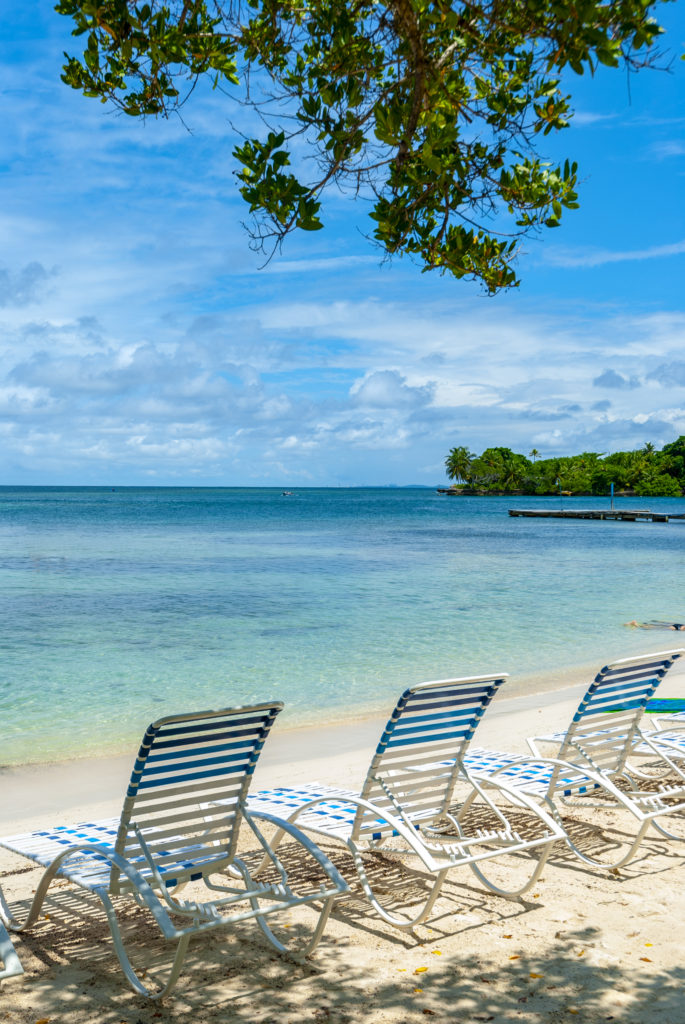
Day 4-8: Santa Marta and the Northern Coast
From Cartagena to Santa Marta, you will travel north along the coast for about 4-5 hours. Since it’s an easy trip, we recommend taking a bus to get there. We used this blog post for instructions on how to get a bus from Santa Marta from Cartagena. Santa Marta is also a port city and the oldest city in Colombia. It is fringed by beautiful beaches and the stunning mountains of the Sierra Nevada range (the highest coastal mountain range in the world!). The gateway to ancient ruins, epic treks, waterfalls dense jungle and wildlife, you could spend weeks in Santa Marta and not see it all.
When we were trying to decide where to set up “base” in Colombia for 3 weeks, we picked Santa Marta for its close proximity to Tayrona National Park, but also the Sierra Nevadas, Minca, and Palomino (more on all those places below). You cannot include Santa Marta in your ultimate family adventure itinerary. It’s a MUST-DO.
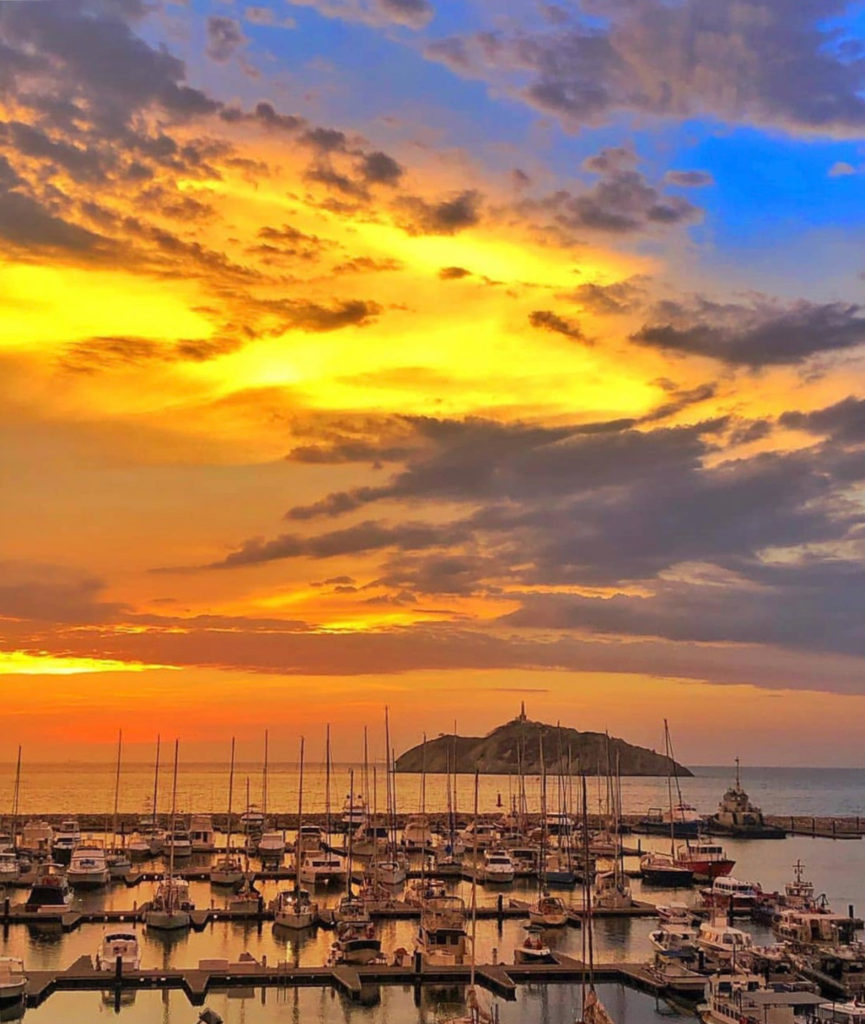
There are lots of options of places to stay in the Santa Marta region, however we elected to stay near Rodadero Beach and were glad we chose that location. It was also easy and cheap to get around by taxi or shuttle bus. As mentioned above, Santa Marta is the perfect spot to explore some of the surrounding areas, so plan on spending a few nights here as your base.
Sailing
A friend recommended doing a sailing day trip out of Santa Marta and let’s just say, we were so glad we went. It was relatively cheap, a ton of fun and we got to see a unique side of the Northern coastal region of Santa Marta, specifically parts of Tayrona National Park. We booked our sailing trip with Tayrona Sailing with Captain Nick and his crew. We took the boat out along the coast, stopped to snorkel, paddleboard and eat lunch and then sailed back catching the sunset as we neared Santa Marta.
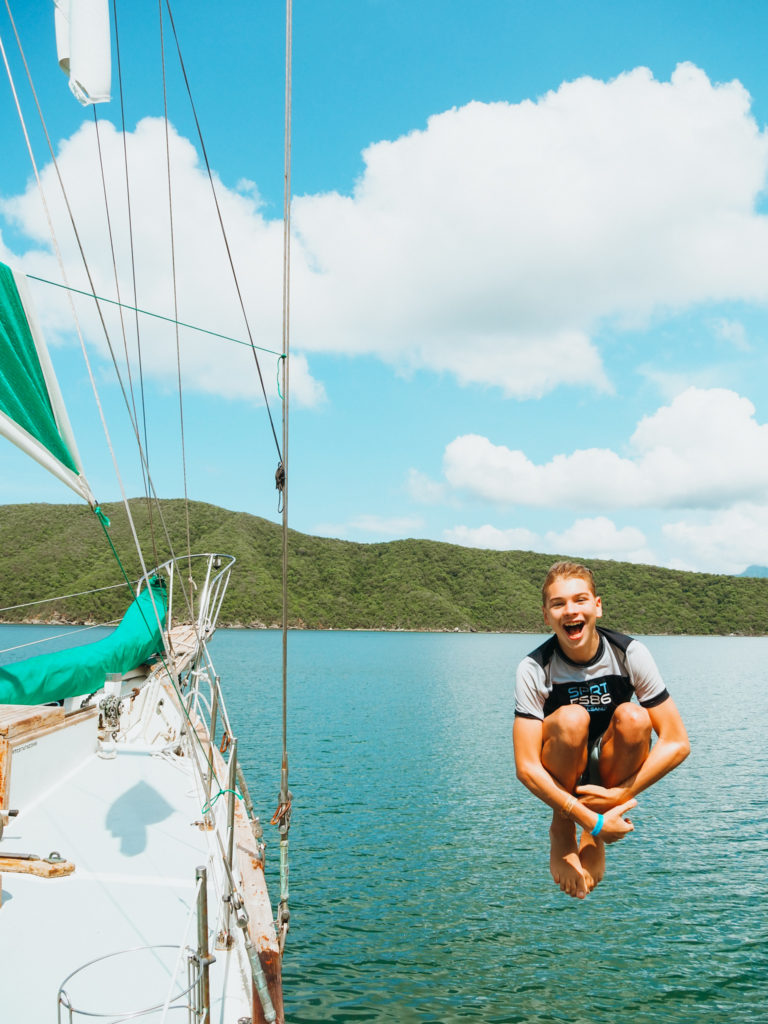
Hike and beach camp in Tayrona National Park
Tayrona National Park is an incredibly diverse region and also home to the Tayrona tribe, the indigenous people that own the land. After seeing photos of some of the beaches here, we knew we had to come here. It did not disappoint. Be prepared for HOT temps though–for two days we sweated our faces off hiking through the jungle, however the ultimate reward was cooling off in the crystal clear, turquoise waters.
Most travelers or even locals just spend a day in Tayrona. They hike in (or horseback ride) early in the morning and then leave in the evening. We opted to stay the night and camp, so we could take our time and explore the different beaches and coastline. This is definitely the way to do Tayrona if you have the time and can spend at least 2 days here. The most budget-friendly way to get to the beaches here is to hike in (there are no roads), camp at one of several campsites and then hike out. However, if you aren’t a fan of camping there are several eco-lodges you can stay at such as Ecohabs.

We elected to camp at Cabo San Juan del Guia, and it was perfect because they had bathrooms, showers, a restaurant and plenty of hammocks and tents to rent (no need to make reservation ahead unless you come between Dec-March). There are other campsites along the beach in Tayrona too. You can get to Cabo San Juan by boat from Taganga, but we recommend hiking in because you miss the incredible scenery if you choose the boat option. Plus, it’s an adventure just getting there!
Cabo San Juan is world famous for its beautiful, picturesque beaches with calm water to snorkel and swim. It was heaven on earth! If you choose to hike to Cabo San Juan, you can arrive using one of two entrances to the park, El Zaino and Calabazo. We started our hike early one morning from Calabazo and got to Cabo San Juan by mid afternoon. After reserving our hammocks to sleep, we relaxed and swam and then watched the sunset. The next day, we hiked out towards the El Zaino entrance, so we could see different scenery and stop at some of the beaches along the way.
One thing to note about the hike, the trail from the El Zaino entrance of the park was much easier (but hotter!) since it follows the coastline and stays pretty flat the whole way. The other route from Calabazo was much harder with some up hill sections, but also more shaded. We were glad we did both trails, but if you are hiking with kids that struggle with elevation gain, I would recommend hiking in/out of the El Zaino entrance. Check out the entrance and camping fees for Tayrona National Park.
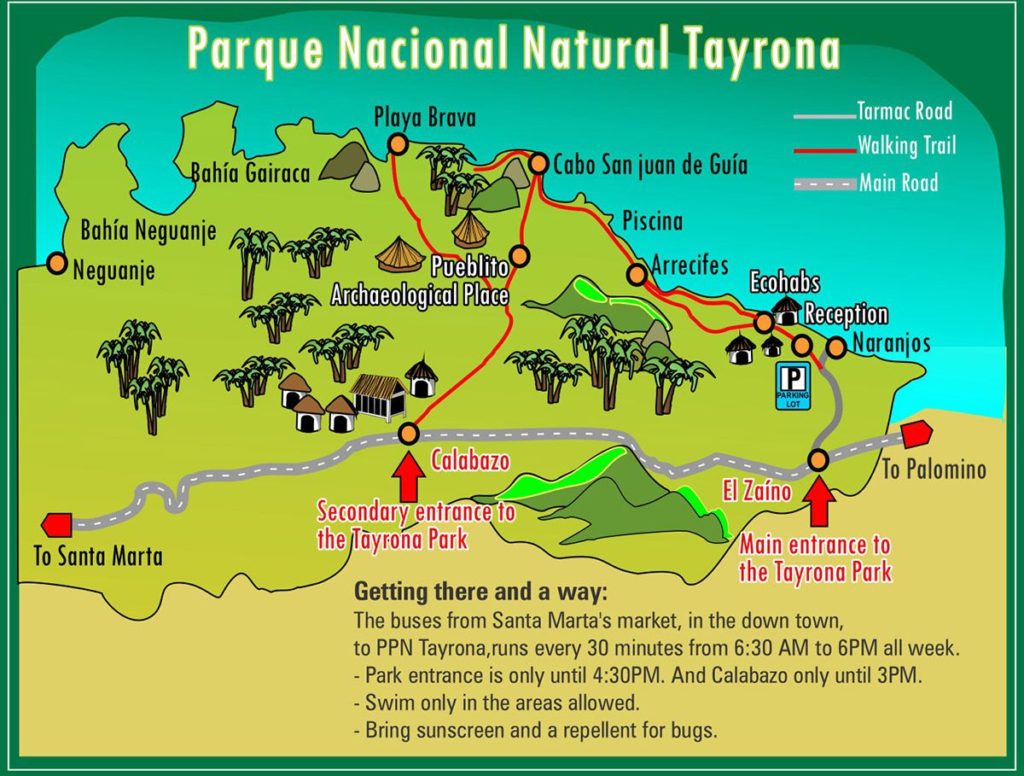
We loved snorkeling at Cabo San Juan and La Piscina because they are more protected beaches within the reef. Playa Arrecifes is no-swim beach because of a dangerous riptide and current, but still worth going to just for the views. We also loved Playa Naranjos which is at near the start of the hike from El Zaino.
Another thing to mention is that you can jump in a shuttle van/taxi from the main entrance of El Zaino to the reception, where you begin hiking. You can also pay extra and take a horse on the trail if you prefer not to walk. Tayrona National Park will certainly be a highlight of your ultimate family adventure itinerary in Colombia!
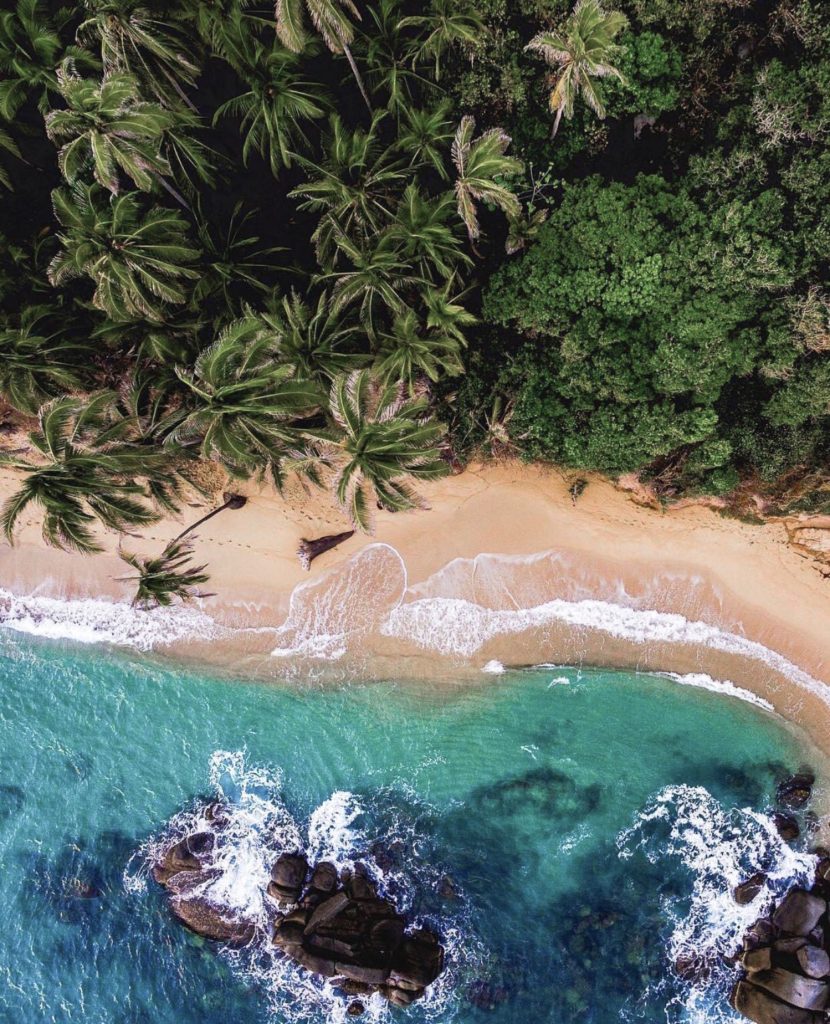
Minca
Once you return to Santa Marta from Tayrona, you will want to spend a day in Minca, which is a popular backpacker town in the Sierra Nevada mountains. We hired a taxi to take us there for about $30 USD, but there are also buses that take you there from Santa Marta. You can find the Minca colectivo in Santa Marta at the corner of Carrera 9 and Calle 12, in the Mercado Publico in Centro. Minca is only about a 45 min drive from Santa Marta and much cooler temperatures than from the coast.
Once in Minca, the main attraction are the waterfalls and the giant hammocks. Yes, you heard me right. Giant hammocks. Casa Elemento, one of the hostels in town has these big hammocks (the biggest in South America!) that you can come and relax at for a small fee (if you aren’t staying there), or even just to watch the sunset. We spent a day chasing and swimming in waterfalls, and then finished off the day at Casa Elemento to see the sun go down (which it ended up raining!)
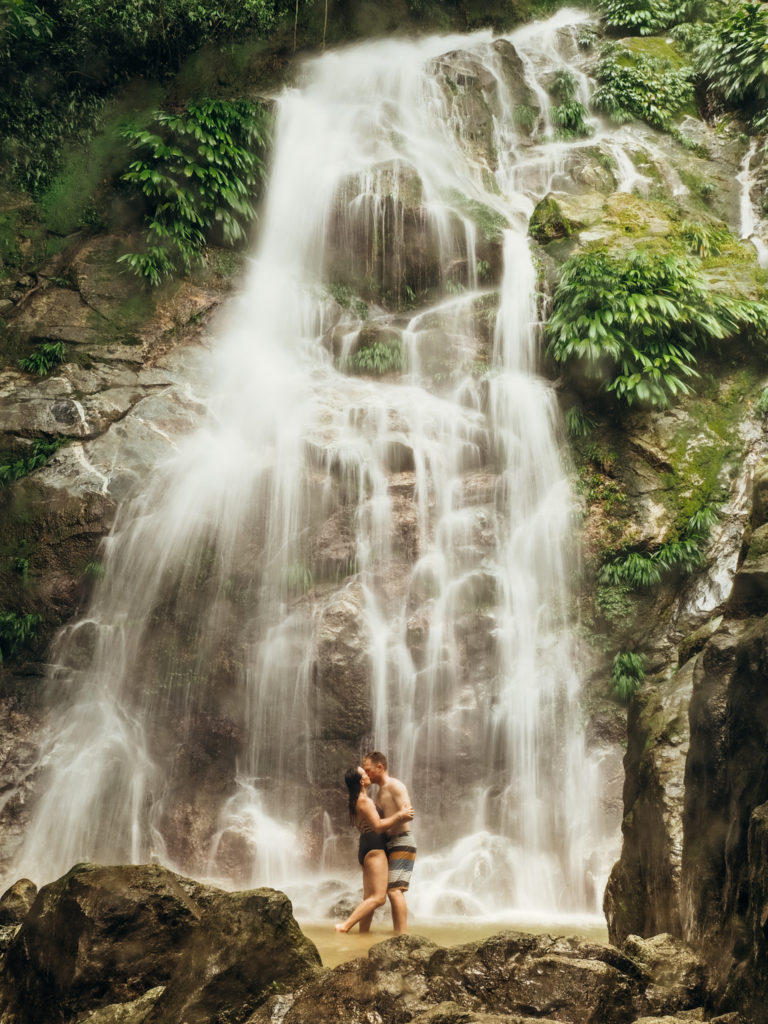
The main waterfalls to visit in Minca are Marinka (there are two falls here) and Pozo Azul (the most popular). All have swimming holes, so make sure to bring your swimsuits. I would also recommend bug spray, rain jackets, water and plenty of snacks unless you plan to grab food in Minca.
To get to Pozo Azul, you have two options: hike or take a moto-taxi. The hike takes about an hour one-way and is mostly uphill. The moto-taxis usually cost around $2-3 per person. We took the moto-taxis to the waterfall because we were short on time. Plus, if you want to avoid the uphill, this is the way to go. You can hike back downhill admiring the view. To take a moto-taxi, just head to the main corner in town (look for a bunch of moto-taxis and guys standing around) and hop on. The ride through the jungle is thrilling!
*If you have small kids, you might want to opt out of taking the moto-taxis and just hike!

The further up the river you climb the more you will discover unspoiled river spots amidst tropical jungle. At the main swimming hole, there’s even a swing and some cliffs you can jump off!
Marinka Falls was our favorite and a little bit longer to get to than Pozo Azul. If you prefer, you can catch a moto-taxi from Minca, or hike. There are also tourist collectivos that can you there, but those require a minimum of 4 people and cost a bit more. The hike takes a little over an hour to get to the entrance and there is a small fee since it is on private property. The property boasts hammocks as well, and a restaurant so if you’re hungry after hiking or swimming in the waterfalls, you can get some lunch here!

If you’re looking for other ideas on things to do in Minca, other options include visiting a local coffee plantation, a jungle tour with Jungle Joe’s Adventures (to include bird watching and river tubing), or even mountain biking with Elemento Tours.
Optional Add-On: Lost City Trek
The Lost City Trek is ranked as one of the best treks in South America and certainly one of the most beautiful places in all of Colombia. This 4-5 day, 44 km trek takes you deep into the Sierra Madre jungle and high into the mountains of the Sierra Nevada de Santa Marta. You trek through indigenous villages of the Kogi and Wiwa Indians, cross rivers and eventually arrive at the famous ruins of the Lost City: Teyuna. These ancient ruins (built 600 years before Machu Picchu!) weren’t publicly discovered until 1972 when some treasure looters stumbled upon them by accident.
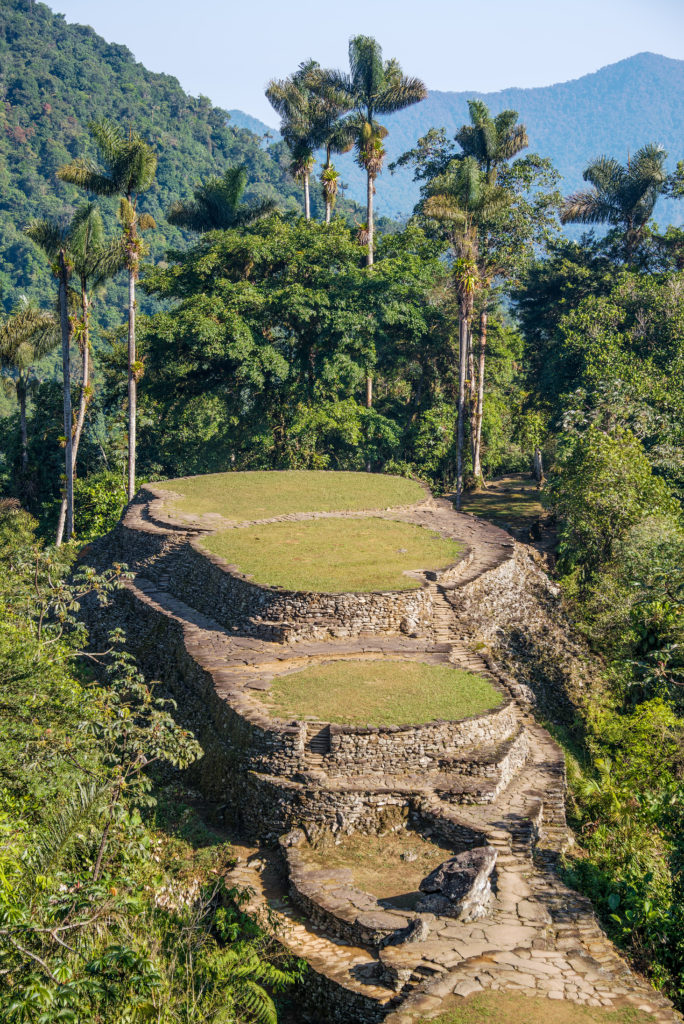
If you can spare an extra few days in Colombia, this is the one thing not to miss, as it is an epic experience and adventure of a lifetime and will easily be your highlight of visiting Colombia. One important thing to note about the Lost City trek: you must go with a guide. This is because you are entering land owned by the indigenous people of the Sierra Nevada. You cannot enter the ruins without a guide and permission from the authorities. We recommend learning more about this trek and booking a guide through Lost City Trek Colombia.
Day 9-10: Palomino
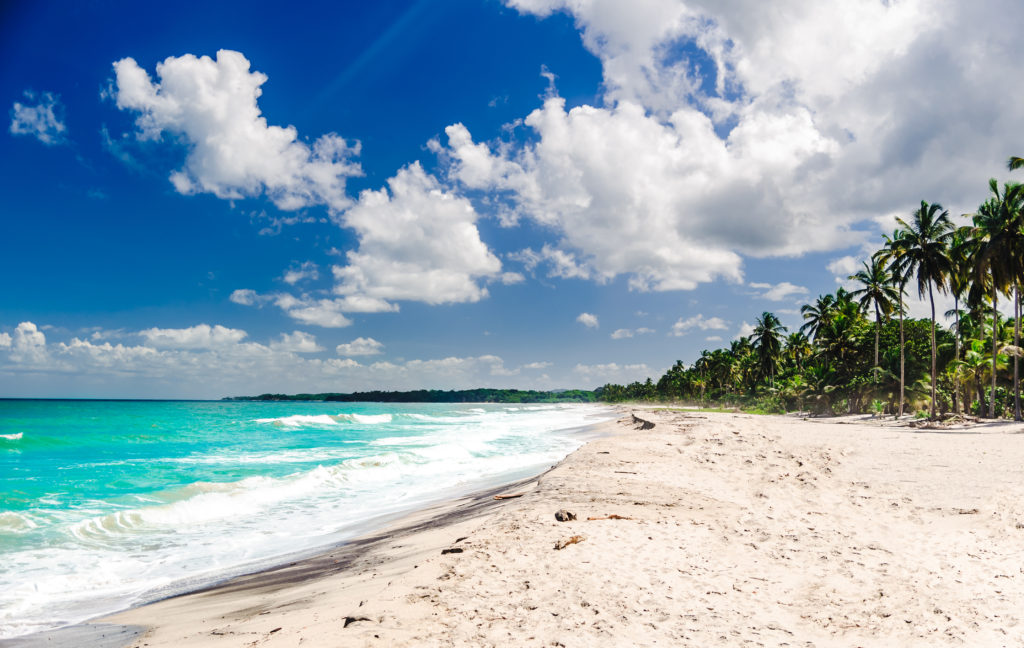
Not far from Santa Marta (about a 2 hour drive) is the sleepy beach town of Palomino. Sadly we didn’t make it here while we were in Colombia, but it’s the one place we wish we would’ve carved out time for. You really don’t need more than a couple of days here, however with that being said, you might get here and want to stay longer. The main reasons people visit Palomino is for the beach/surf and to go river tubing on the Palomino River. There are several hostels you right on the beach, such as the Tiki Hut Hostel and the Dreamer Hostel, making this stop nice and relaxing after trekking in the jungle.
River Tubing
You can rent a rubber tube at several places in town, and then simply head up into the hills behind the town until you reach the edge of the river. From there you will jump onto your tube and float down the river for a few hours until you reach the sea. Enjoy the peaceful nature as you lazily float along the river and catch some views of the snow-capped mountains of the Sierra Nevada range in the distance.
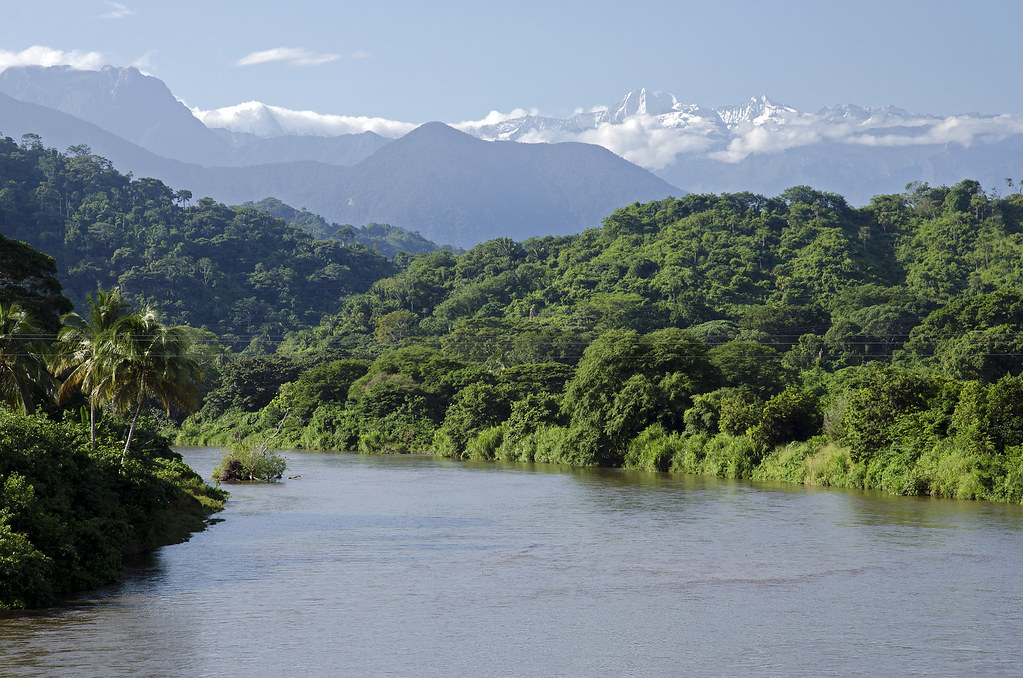
Surfing
Many visitors flock to Palomino to surf as the conditions are ideal, especially for beginners. You can rent surfboards at one a few shops along the beach and even get lessons if you aren’t confident going on your own.
Go see flamingos
An easy day trip and less than an hour from Palomino is the Flamingos Flora and Fauna Sanctuary, nearby the village of Camarones. You can hire a local guide and sailboat and head out onto the lagoon to see these pink birds up-close. Another option is to book a tour with La Sierrita, which is the best ecotourism company operating in Palomino. They offer many excellent and unique ecotours around the surrounding mountains and jungles of Palomino from birdwatching excursions to visits to local Indigenous communities.
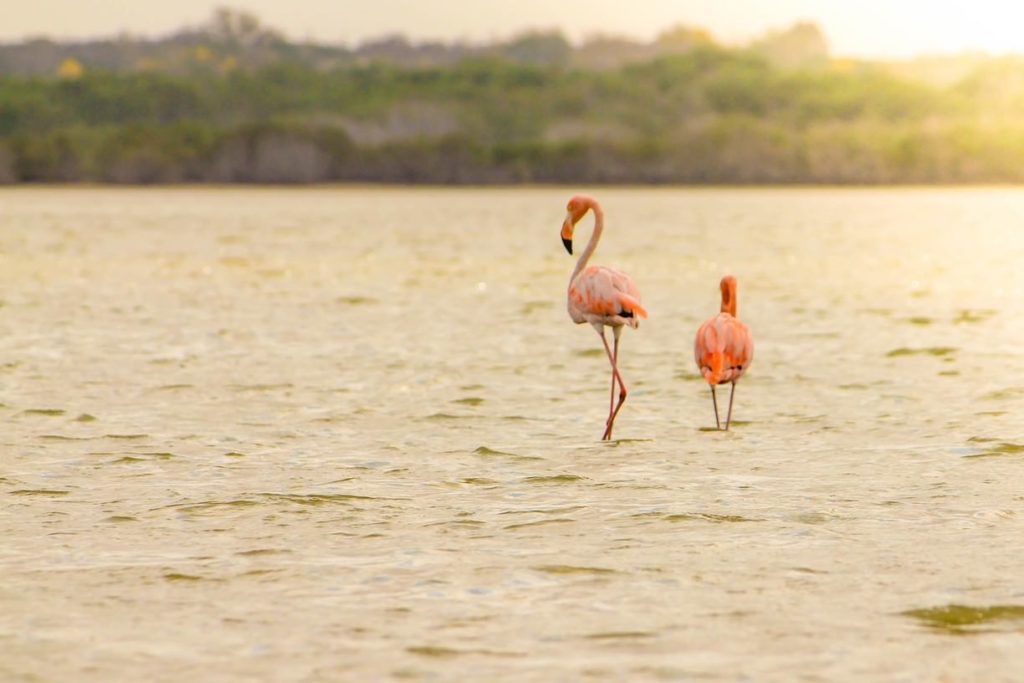
Day 11-15: Medellin and Guatape
After spending a couple of days in Palomino, you will need to make your way back to Santa Marta and catch a hopper flight to Medellin, Colombia. This is the quickest and easiest way to get to Medellin, as a bus will take you more than 15 hours. We found cheap flights through Viva Air, however a quick warning about Viva Air: they have strict luggage requirements. Make sure to check those thoroughly and pay for baggage fees ahead of time to avoid the extra costs.
Medellin is a huge city, like 6 million people HUGE. It’s a beautiful city though, and quickly becoming a hot spot for expats and retirees as it has an ideal climate, surrounded by mountains and hills, and is safer than many other major Colombian cities. That’s not to say that Medellin doesn’t have its problem areas, but in the last decade or two, it has really cleaned up its act.
Medellin used to have a pretty rough past, at one point being the murder capital of the world. That was largely due to drug and gang violence, but that has all changed since the government took control and the people adopted change. Now, Medellin is a vibrant, lively metropolitan city on the up-and-up.
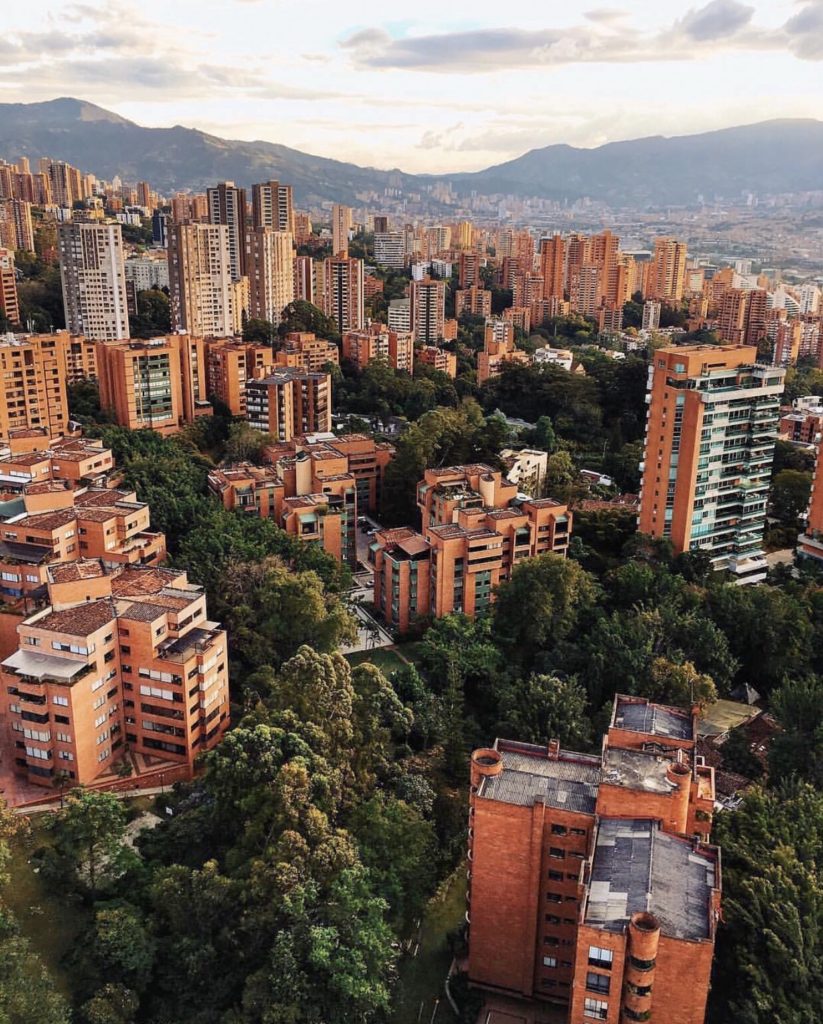
Walk the streets of Comuna 13
We aren’t big “city” folks, but we did enjoy spending a few hours one day touring the infamous Comuna 13. This neighborhood or “barrio” used to be the hub of drug trafficking by the Medellin cartel (run by Pablo Escobar), which made it dangerous due to constant gang and cartel activity. Eventually, the government stepped in to attempt to gain control and stop the violence. This military operation caused mass civilian casualties and eventually the residents of Comuna 13 had enough.
The youth of the barrio decided to take matters into their own hands and change what was happening. Rather than falling into the tempting world of gang life, many focused their energy in the form of art. Music and graffiti replaced the sounds of gunfire and cracked brick walls. Guns and violence were slowly replaced by spray cans and street performances.
Since 2010, the city itself has poured millions of dollars into Comuna 13, in hopes of revitalizing the former war zone. Now, almost a decade later a strong and ever-present police presence holds things in a more peaceful state. The residents feel safer and tourism (which was once banned to this area of Medellin) has been on the rise here for the last 8 years. In fact, it’s one of the most visited spots in Medellin! Now, tour guides take people on art and graffiti tours, while explaining the history of Comuna 13. You can book a tour there, as there are many guides offering their services.

Ride the tram & attend a soccer game
We would also recommend taking the metro tram while in Medellin as you can get great views of the city and it’s also a cheap way to get around (it’s how many of the locals get to their homes). Another thing we did while in Medellin was attend a soccer match between the Medellin Nationals and another Colombian team. So much fun! You definitely have to experience the chaos and energy of a soccer game in South America.
Escape the city into nature
If you want to get away from the hustle and bustle of the city and escape to some green spaces, there are some great parks to visit in Medellin. The Botanical Gardens are more like a park than a botanical garden with a large lake and plenty of paths meandering between pretty gardens and trees. It’s a great place for a picnic, or just to wander around enjoying the birds and animals in the heart of the city. We also suggest going to Avri Park (go by tram!) and El Salado Park which are other beautiful parks that offer great nature escapes from the city.
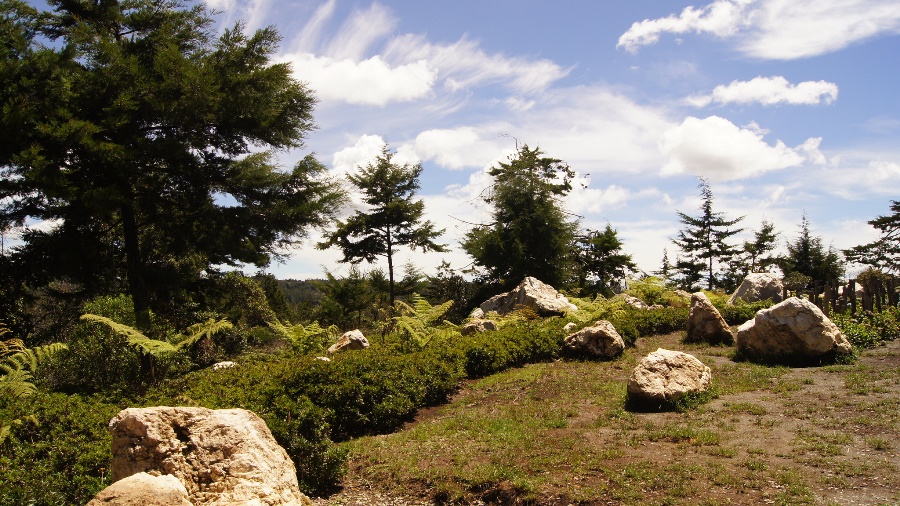
Explore Guatape
Probably our favorite area to explore near Medellin was the quaint town of Guatape, located about 2 hours from the city (you can take a bus or taxi there). Guatape is easy on the eyes with its colorful buildings, cobblestone streets and cute shops and restaurants. We spent two days here (which felt like enough time) and absolutely fell in love with this town.

The main attraction in Guatape is the famous, massive sugarloaf-shaped rock (resembling the one in Brazil) named El Penon. To get there, take a 10 min moto-taxi ride from Guatape to the base of this monolith rock where you will ascend the 740+ steps to the top. Worth the climb? You be the judge.
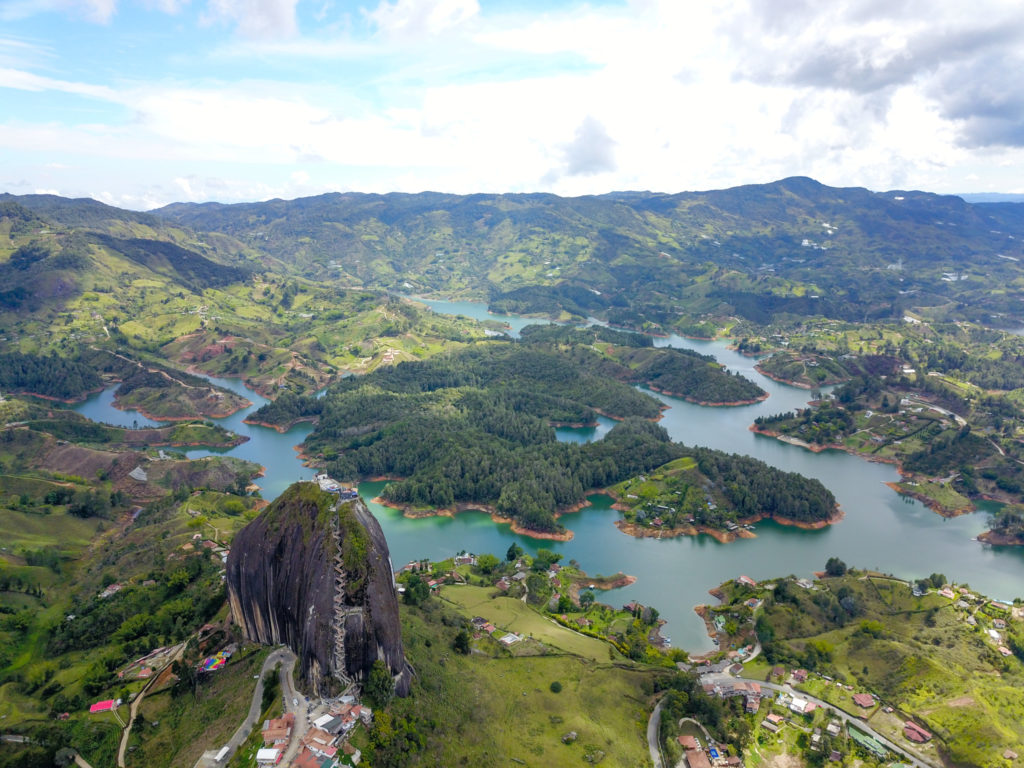
The surrounding views of the lake and mountains surrounding El Penon are astounding and a must-see attraction while in Colombia. In fact, it was the main reason we traveled to Medellin in the first place and it exceeded our expectations! Our advice is to go to El Penon early in the morning at 8AM or late afternoon around 4PM to avoid the mid-day crowds (and also the warmer temperatures). The entrance fee is around $6 per person.

Optional Add-On: Hike the Cocora Valley
Not far from the coffee farms of Quindio, you’ll find the Cocora Valley; a cloud forest that the unique and towering — up to 200 feet — protected wax palm calls home. Since you will end your trip in Medellin (after you return from Guatape), the Cocora Valley is a great extension from Medellin if you have the time and at least 2 extra days.

To get to Cocora, you will need to take a bus from Medellin to Salento. Depending on the type of bus (if it’s direct or indirect) and traffic, the drive can take anywhere from 6- 9 hours. If you’re looking to really maximize your time, you can take a night bus which leaves Medellin around 9PM and arrives early in the morning the next day. This gives you a whole day to explore and hike the Cocora Valley before returning on another night bus (this option also saves on hotel costs!).
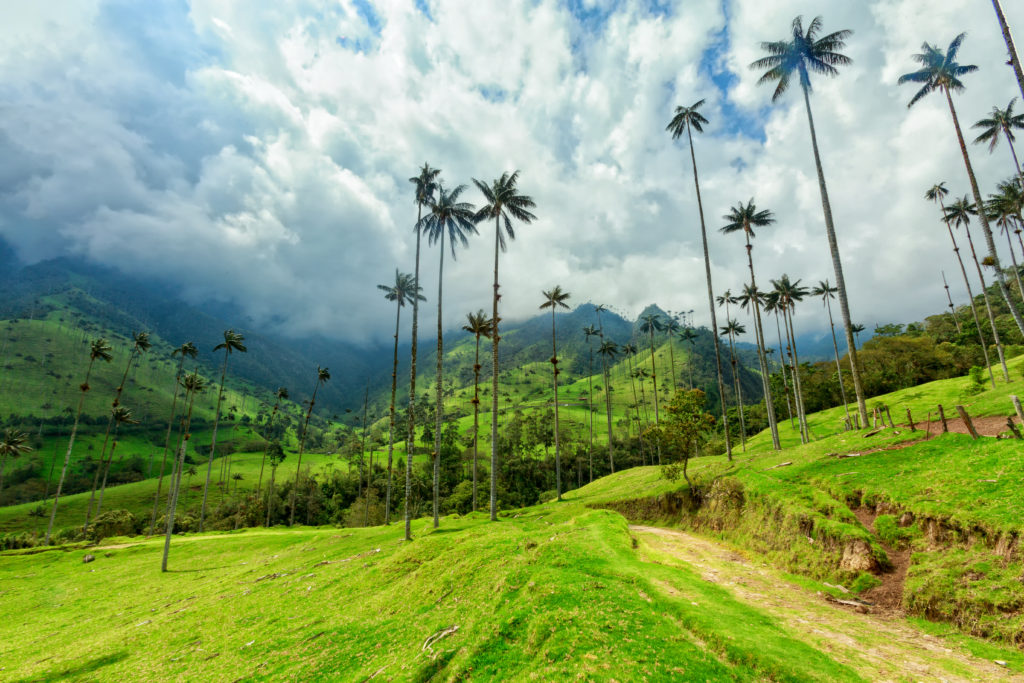
If night buses aren’t your thing, you can always elect to take a direct bus in the morning (departure times start around 4AM) from Medellin and arrive in Salento 6.5 hours later. The two main bus lines in Colombia are Flota Occidental and Empresa Arauca and both leave from the Terminal de Transportes del Sur in Medellin.
Hiking the Cocora Valley takes about 6ish hours and is very muddy, so make sure to wear good shoes or even boots. The hike is stunning though and worth the extra trip if your schedule allows. Other things to do in Cocora are visit a local coffee farm, go horseback riding, or just stroll the streets of Salento.
Conclusion
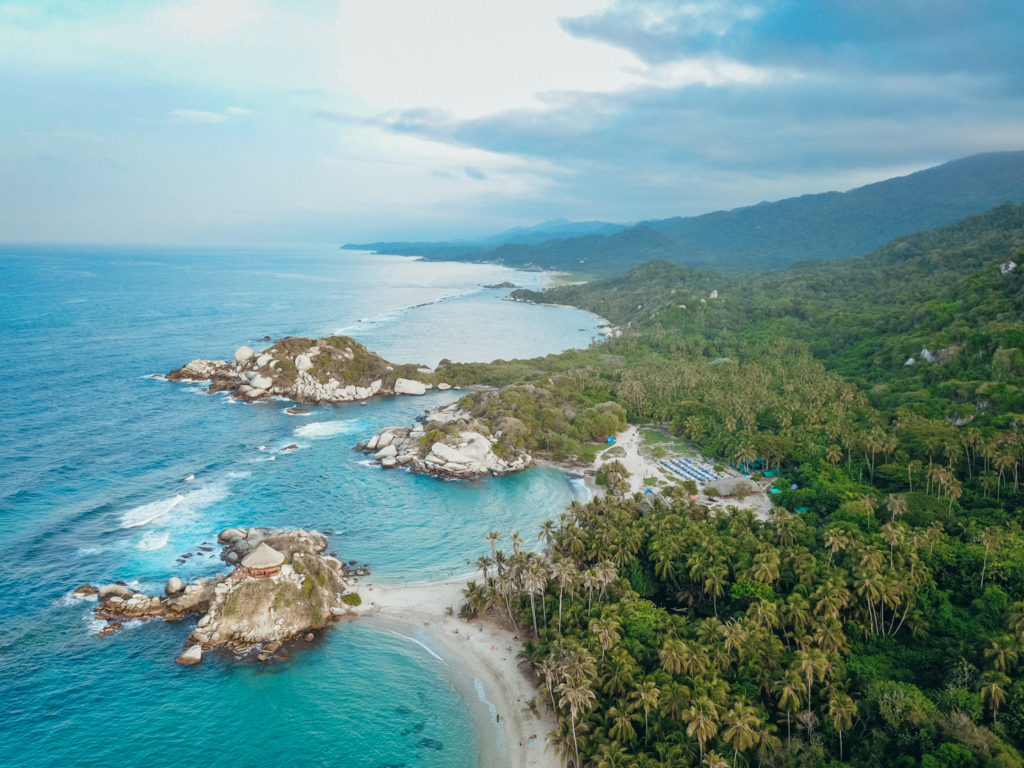
There is so much to explore in Colombia that even a month or two is barely scratching the surface, however by following this itinerary (with or without the add-ons), you will see some of the very best Colombia has to offer and fall in love with one of the most underrated countries in all of the world. You can also do what we did and take a boat from Panama to Colombia and island hop through the San Blas Islands. Talk about an epic, once-in-a-lifetime experience!!
